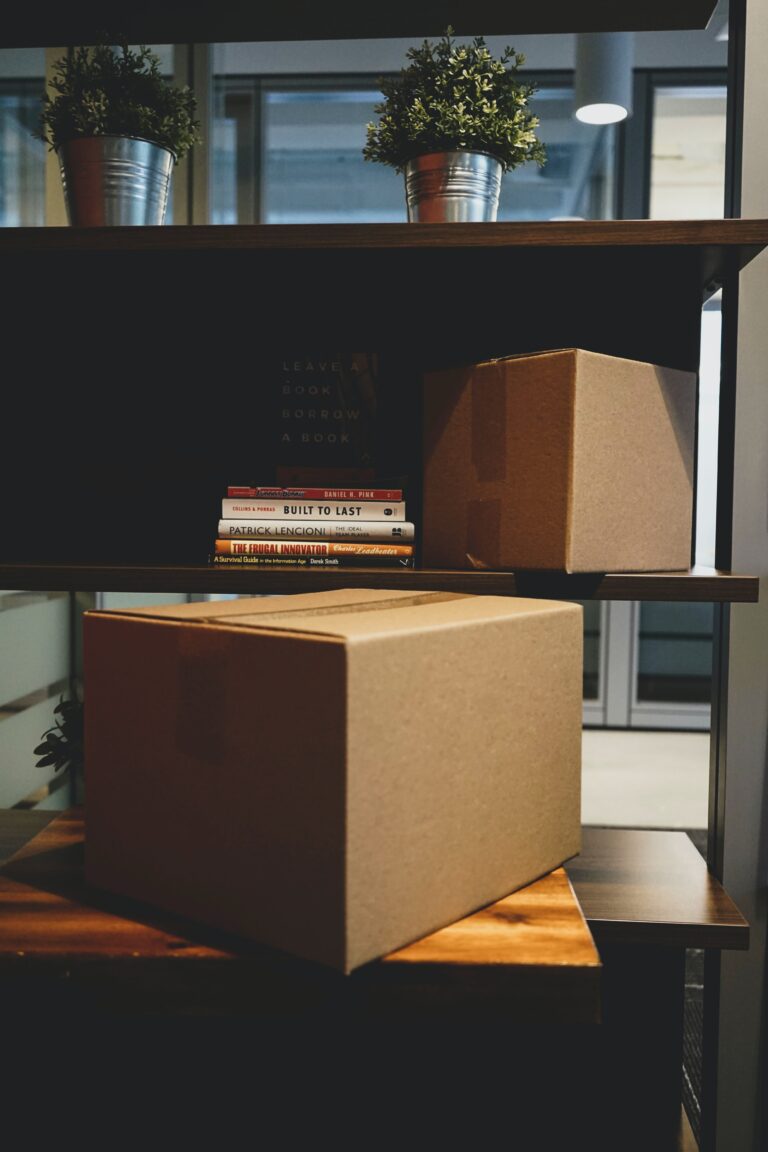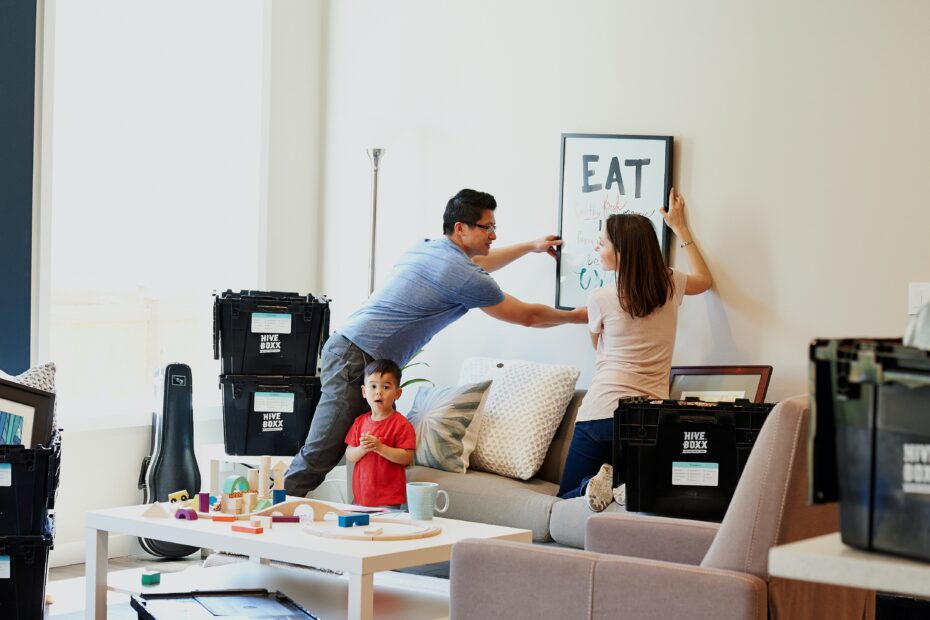
Packing up & moving your entire life is no small feat. The tensions build, stress levels at an all time high, and everyone just cannot wait for it to be over. You’ll probably hear the lines “How do we have THIS much stuff”, “How did we fit all of this in our home”, or “That’s where that thing went”, multiple times throughout the process. Although moving can be a crazy experience, remember that it is a time of change, and you are starting the next part of your life – don’t forget to slow down to enjoy it. Let us help alleviate some of the headache with our proven tips and planning advice.
First things first, you cannot start anything without making a plan to work through. You need to know what should be happening when, and if you can work ahead that’s wonderful. There’s nothing worse than your moving day approaching and realizing that something has been forgotten – that’s why we have thought of it all for you, follow along below:
1 MONTH OUT FROM MOVING DAY (OR NOW IF YOUR CLOSING IS SHORT!)
Make plans with movers – whether it be professionals or friends & family. Sign a contract to finalize price & dates if you are hiring outside help. Also, good to think about is your moving supplies – make sure if you are moving yourself, you have access to a Dolly, moving boxes and the like.
Make arrangements for moving day, such as booking time off work, childcare and/or pet sitting.
Start packing! Start with items that aren’t in daily use. (Think seasonal items)
Organize & pack important documents. These will also ride with you on moving day. A small folder or folio is helpful for storing these documents and keeping them handy. Prep a moving day essentials kit – these are items you’ll need right away.
Start a shopping list. Begin a list of items you’ll need to buy for your new place.
Complete a change of address form or order it online at Canada Post.
3 WEEKS OUT FROM CLOSING
Prep furniture. Dismantle and wrap pieces you won’t need for the next three weeks.
Pack the kitchen including small appliances, extra dishes, and anything you can eat without for the next few weeks. Yes, that fancy China that doesn’t come out unless it’s a super special occasion can be packed now, you’re not going to be using it until you are settled into your new home.
Pack home décor, knick knacks and things on the wall like shelving or art.
Pack out-of-season clothes, shoes, and accessories.
2 WEEKS OUT FROM CLOSING
Plan to ‘eat your freezer and fridge’ – perhaps that’s a meal plan using up what’s left, making some freezer meals to bring along to the next place or hosting a BBQ to use up what’s left! Then you can start fresh at your new home and less space is used trying to fit the cooler(s) in the moving van.
Grab the essentials and refill your prescriptions. If you have prescription medication, make sure you transfer it to a nearby pharmacy to your new home.
Return borrowed items like library books and neighbors’ belongings if you are moving out of area.
Reconfirm moving plans with friends or movers.
1 WEEK OUT FROM CLOSING
Prep remaining furniture by dismantling and/or wrapping them.
Complete last-minute packing.
Prep appliances. Unplug and clean any appliances that are making the moving. Defrost your fridge and deep clean any appliances that are staying behind for the new owners using these tips.
Schedule shut-off and turn-on of utilities.
Begin deep cleaning your current home.
ON MOVING DAY
Place your valuables, important documents and ‘open first’ kit in your vehicle.
Do a final walkthrough of your old home. Ensure agreed upon fixtures and chattels are left behind.
Once your keys transfer to the new owner – you must leave the premises.

Now that the plan is put into place as a guide for you, it’s time for the real work to begin. We find it is always less stressful of a moving process if you start your packing as soon as possible. Trust us, there is always more in your home than you would have ever thought there was. Not only that, but the less you have to pack up nearing the big moving day the more time you will have to complete other important tasks. Below is a collection of top packing tips we rounded up so you can pack effectively, efficiently, and of course, carefully!
- Assemble your packing supplies. We love to make a kit by putting our packing tape, bubble wrap, labels, markers, and boxes in one place that we can move around the house with us while we pack.
- Always begin by getting rid of items you no longer need so that you won’t have to pack, move, and unpack them. You’d be surprised how much this can lighten your overall moving burden.
- Set yourself up for success by starting as early as possible! The earlier you start packing, the better it will be. Anything you won’t be using before your move can be packed. This includes things like; seasonal items, guest rooms, basements, and good dishware you only use on special occasions.
- Pack like items together. Start packing each box with a layer of padding – it can be newspapers, bubble wrap, or household goods, like blankets or towels. Then, put the heaviest items into the box first. Don’t want to make waste? Save up old newsprint for a few weeks and use clothing and towels you already own. For example, (clean) socks make for great covers for glassware!
- Label each box by room and by its contents. If you’re feeling extra organized and want to avoid the classic, “now which box is ______ in?!” – make a contents list as you pack for each box. A spreadsheet is a great way to do this paper-free. Other important things to label on your boxes include what room the box belongs in, whether or not it’s fragile, and which side needs to be ‘up’.
- Don’t forget your ‘open first’ kit! This includes things you’ll need right away like:
- Toilet Paper
- Paper Towels
- Hand Towels
- Paper Plates & Cups
- Light Bulbs
- Drill, Screwdrivers, Allan Keys & Other Basic Tools
- Trash Bags
- Pet Food (if applicable)
- Toothbrushes & Paste
- PJs
- Sheets
- Soap & Shampoo
- Refrain from filling boxes to the brim. Think of it like bagging your groceries – heavy stuff on the bottom, light on the top.
- Don’t pack each item in dresser drawers – instead slide drawers out, and then use protective stretch wrap around it to seal in the contents. Another clothing related hack – keep clothing on hangers and place in a large suitcase or wardrobe moving box to save time later. You can even throw a garbage bag around the bundle of clothing, cutting a hole for the hook part of the hanger, and elastic banding the bunch of hangers together. Tie up the bottom for easy and cheap clothing moving.
- Don’t leave empty space in boxes – decrease the risk of fragile possessions breaking. Space also increases the risk of the box being crushed in the moving truck. Make use of every available nook and cranny by using packing materials or soft objects like your clothes to fill spaces between bigger, more rigid items.
- Get a mattress bag for each mattress so they do not get dirty during the move.
- Round up the boxes for your electronics. Game consoles, TVs, Monitors, and other electronics can be most easily packed back into their original boxes. If you no longer have these boxes, you can find electronics boxes online or at a hardware store near you.
We hope that the moving guide & packing tips help you slide into your new adventure with ease! If you have any other questions or need help with anything, we are always here. Happy moving!